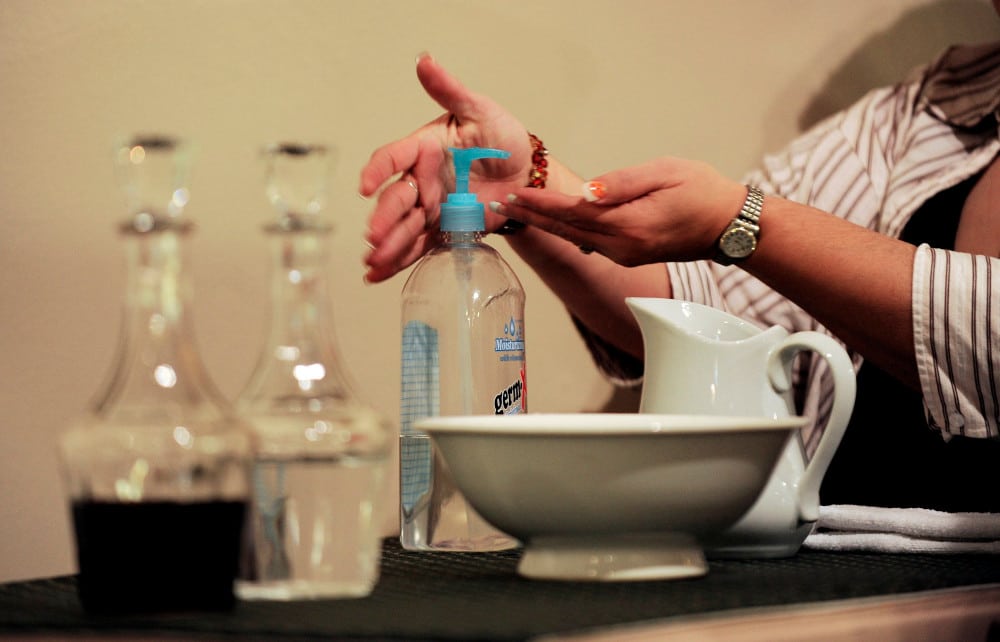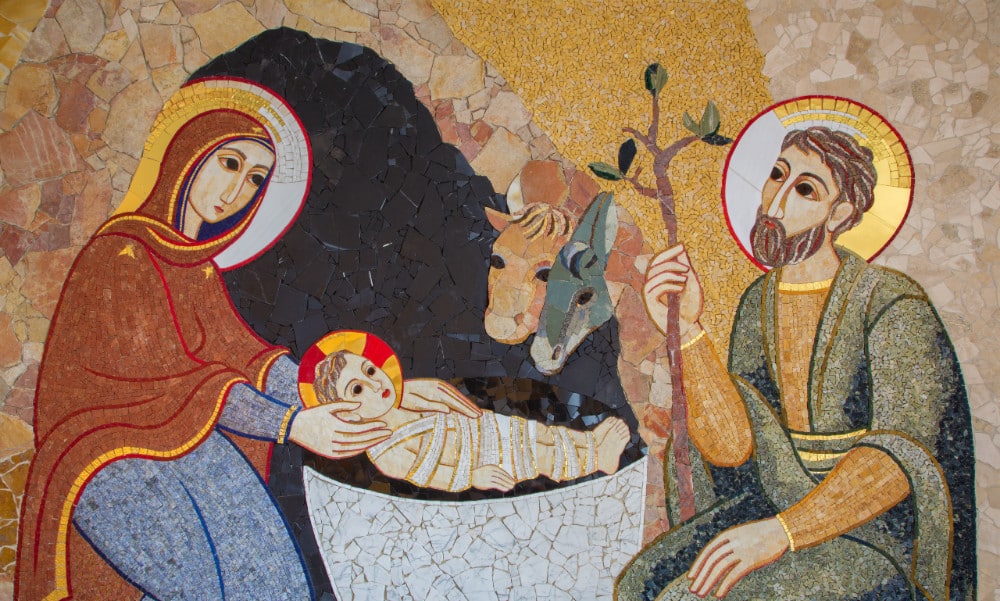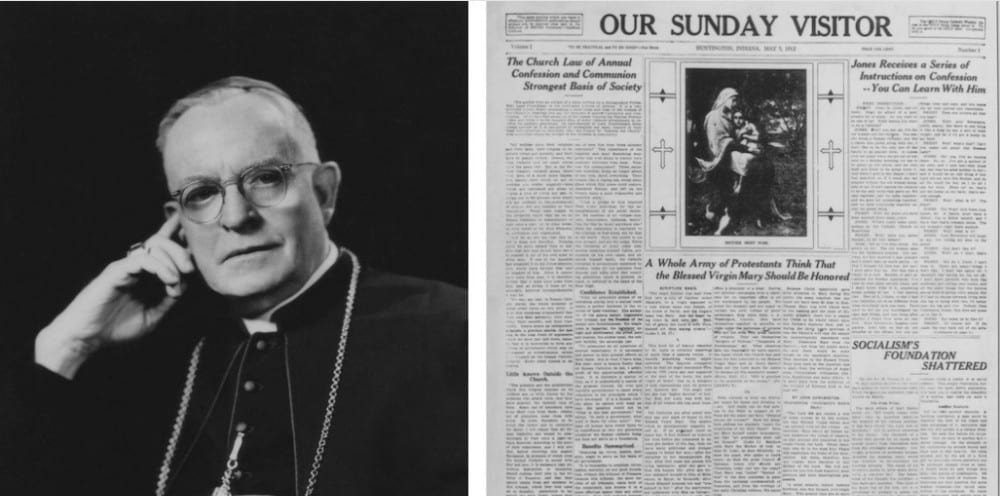 Question: If a priest, whose hands are consecrated, should wash after communion, why not request the same to laymen who communicate on the hand?
Question: If a priest, whose hands are consecrated, should wash after communion, why not request the same to laymen who communicate on the hand?
— Fred Nazar, via email
Answer: There is something worth considering here, especially in terms of Eucharistic piety. Let’s look at some background.
It was common in the past to be fastidious about the purification of the sacred vessels, sacred linens and the priest’s hands after the distribution of holy Communion. This is because the full presence of Christ endures even in very tiny portions or amounts of the consecrated host or the Precious Blood. The norm is that, in the Eucharist, as long as the species remains, so does the presence of Christ. The term “species” refers to what is seen by the ordinary eye and comes from the Latin specere (to look or see). So microscopic particles are not and cannot be attended to. But, as long as the species of bread remains of a consecrated host, the true presence of Jesus remains. The same is true with even a small drop of the Precious Blood. This is the case even in very small particles or fragments. Hence, the priest is directed to carefully purify both his hands and the vessels in the following way:
“Whenever a fragment of the host adheres to [the priest’s] fingers, especially after the fraction or the Communion of the faithful, the priest is to wipe his fingers over the paten or, if necessary, wash them. Likewise, he should also gather any fragments that may have fallen outside the paten. … The paten is usually wiped clean with the purificator. Care must be taken that whatever may remain of the Blood of Christ after the distribution of Communion is consumed immediately and completely at the altar. If a host or any particle should fall, it is to be picked up reverently. If any of the Precious Blood is spilled, the area where the spill occurred should be washed with water, and this water should then be poured into the sacrarium in the sacristy” (General Instruction of the Roman Missal, Nos. 278-280).
Thus, care is to be taken to ensure that fragments or drops of the Blessed Sacrament are not ignored, trampled or left about in any way. One who is older or attends the Traditional Latin Mass (TLM) will note that, after the consecration, the priests keep their thumb and index finger (the “canonical fingers”) joined to avoid any loss of fragments from their fingers until the purification can be done. Chin patens and Communion only on the tongue was also practiced in the past and at the TLM today — along with novus ordo parishes where priests have reclaimed these practices to differing degrees — out of a similar concern for fragments or dropped hosts.
In the period of the liturgical changes during the 1960s, some liturgists thought the concern for purifications and the possibility of particles had become “excessive.” It was deemed that some priests were too compulsive and took too long to purify the vessels. Hence, the requirements to join the canonical fingers and to doubly purify the chalice were dropped. But, purifications were still required. If there were “excessive” concerns in the past about purifications, there developed among some a kind of over-correction. Many priests became very casual about the purifications. When concerns were expressed, some would hear priests say, “Jesus is not a crumb” (a reply that offends pious ears and disregards solid Eucharistic theology). Seminarians in the 1970s and 80s were also told to be relaxed about these matters and were scolded if they expressed concerns.
It was during this period that Communion in the hand was promoted and implemented as well. Such a practice likely would not have been received had the concern for fragments not been lessened in the minds of priests and many of the faithful.
Where does all this leave us? While there may be some truth that past practices were “excessive,” the overcorrection of these matters has led us to a time when we may be too casual. We are also confronted by your observation of a disjointed practice wherein the priest is directed to carefully collect any fragments and purify his hands where necessary, but the faithful are not similarly instructed or required to do so. Even if the priest may have more need to purify his hands due to distributing holy Communion, it does not follow that there are no concerns for fragments among the faithful.
Perhaps such a concern can be considered in the upcoming Eucharistic Congress here in the United States.
Msgr. Charles Pope is the pastor of Holy Comforter-St. Cyprian in Washington, D.C., and writes for the Archdiocese of Washington, D.C. at blog.adw.org. Send questions to msgrpope@osv.com.







